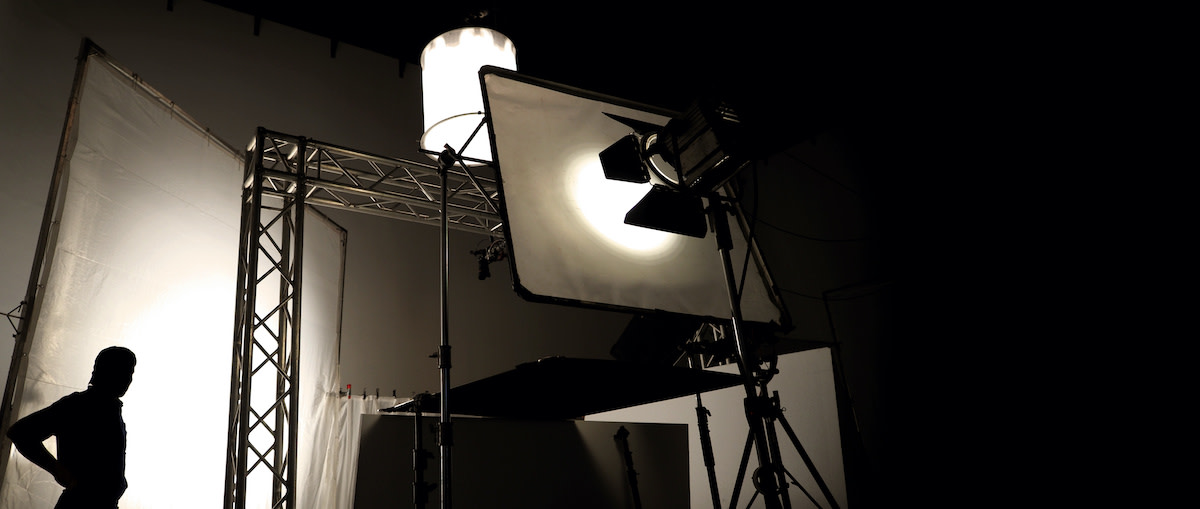How to Set Up Video Lighting: 4 Tips for Lighting Video
Written by MasterClass
Last updated: Jun 7, 2021 • 4 min read
Lighting is an essential part of video production. Cameras need plenty of light to produce a quality image and set the right atmosphere, but that can be tricky depending on the kind of video you want to make. If you want the right light for your videos, it’s important to understand which lighting to use and how to set it up.
Learn From the Best
What Are LED Lights?
Light-emitting diodes, also known as LEDs, are semiconductor devices that emit light when an electrical current passes through them. Where incandescent light bulbs use electricity to heat their tungsten filaments until they emit light, LED lighting uses that energy to produce light directly, generating almost no heat. LED lights are fast becoming the videographer’s go-to. They provide easy portability with a battery power supply and charger, rather than an AC adapter that needs a wall outlet.
What Type of Lighting Kit Should You Use?
The lighting you use for your video shoot will likely depend on your budget and the content you’re making, similar to photography lighting. For instance, make-up tutorials will often use ultra-bright LED ring lights to show small, close-up details, while interviews may use soft light or LED panel lights for a more flattering shot of the subject.
- For small budgets: DIY videographers who don’t own a lighting kit or have access to professional lighting equipment can invest in a few items to make their own light kit. Purchase inexpensive clamp lights, LED video light panel, or tripod-mounted work lights from a hardware store. These lighting options can be harsh and non-dimmable, so you’ll need diffusers or reflectors to soften their effect. Purchase basic heat-resistant color filters, such as blue gels—which help shift the yellow tint of a halogen bulb to white—and soft filters to reduce harshness. Wrap Cinefoil, or black wrap, around the edges of the lamp to help direct and focus the light.
- For large budgets: Studio lighting kits are the best option for professional videographers with sizable budgets. You can find continuous lighting kits with fluorescent lights, dimmable bi-color LED light panels, or high-quality Tungsten bulbs. Before purchasing the kit, you’ll need to figure out which continuous light works best for your videography needs. Tungsten lights are powerful but heat up fast. Fluorescent lights are affordable and produce little heat, making them a safer choice on-set. However, fluorescent lights are not as powerful as Tungsten. LEDs are long-lasting but may create shadows if you’re using multiple brands. To round out your kit, you’ll need diffusers, color filters, and camera light stands.
How to Set Up Lighting for Video
The most basic lighting setup is a three-point lighting setup, which highlights the main subject and makes them stand out from their background. This setup helps create balance and a controllable distribution of light, which is essential for high-quality video production. To properly set up your lighting equipment:
- 1. Set up your key light. The key light is the main—and strongest—light source in a scene or on the actor. Place this light off to one side of your subject to create a slight shadow on the opposite side of their face.
- 2. Add your fill light. The fill light adds dimension and softens harsh shadows created by the key light. Place your fill light on the opposite side of the subject’s face to balance unwanted contrasts or shadows.
- 3. Place your backlight. The backlight goes behind the subject to help define and highlight their features and outlines. Backlight helps separate the subject from the background, creating distinct images and features.
4 Video Lighting Tips
Lighting a scene requires trial and error. Take time to experiment with three-point lighting, soft light, hard light, low-key light, and high-key light to find the right balance of light and shadows for your shot, and give it that studio light quality:
- 1. Diffuse harsh light. Lights with no dimming capabilities or filters (like clamp lights) are known as “hard lights.” These lights are useful for shooting high contrast and gritty scenes like in noirs or dramas. However, you can diffuse them to mitigate their hardness. You can control and diffuse light with the barndoors of a softbox. If you’re on a tight budget, try bouncing the light off a wall, white sheet, or a reflector to reduce its intensity.
- 2. Mind your temperatures. White balance helps present colors truthfully on your video camera by determining the temperature of your white light. Adjustable color temperatures are a useful feature to have—without it, you may end up with unwanted color casts that look unnatural on camera. Although many digital cameras or video recorders come with an auto white balance (AWB) feature, you’ll likely need to manually adjust it yourself to ensure that your videos convey accurate colors depending on the lighting conditions.
- 3. Watch for glare. Subjects who wear glasses may create glare or reflections. Increase the size of your light output by using indirect lighting or polarizing filters, or raise the height of your key light to reduce the amount of reflection.
- 4. Be careful with natural light. Daylight can create shadows and inconsistent lighting as the sun moves across the sky. If you’re shooting outdoors (especially if you have a long shoot day), avoid relying on the sun as your light source. You’ll still need an equipment setup that can keep your lighting consistent.
Want to Learn More About Film?
Become a better filmmaker with the MasterClass Annual Membership. Gain access to exclusive video lessons taught by film masters, including Spike Lee, David Lynch, Shonda Rhimes, Jodie Foster, Martin Scorsese, and more.
